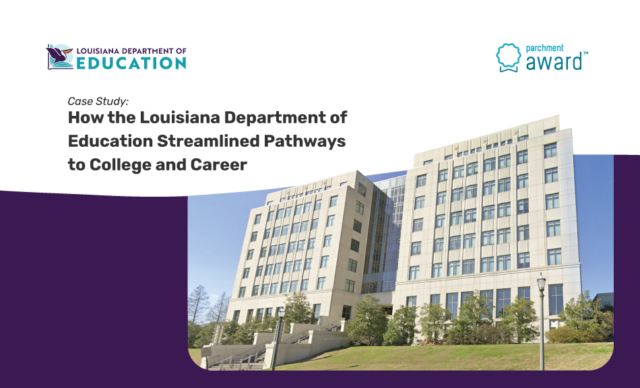Engaging with Students to Reduce Summer Melt
Students lacking support or guidance may find themselves more likely to be overwhelmed and a victim of summer melt, especially now during the COVID-19 pandemic. Jameia Tennie and Tim Lucas discuss the impacts of COVID-19 from a higher education Admissions Office and K12 perspective – and offer creative problem-solving for reducing summer melt.
- Jameia A. Tennie, Director, Office of Undergraduate Admissions, North Carolina A&T State University
- Tim Lucas, Director of School Counseling, Stone Bridge High School, Virginia
Combating Summer Melt
In 2013, the Center for Education Policy and Research at Harvard University published a Summer Melt Handbook that explains two ways to think about the topic. The first is a term that has long been used by college admissions officers to refer to the tendency of some students who paid a deposit at a particular college or university to instead attend a different institution (usually presumed to be of comparable quality). The second, possibly more relevant for this admission cycle, is when seemingly college-intending students fail to enroll at all in the fall after high school graduation.
Q: How did you combat summer melt in the past, and how is it different this year?
- Jameia: Up until this year, we were looking to retain two types of students. For those who have confirmed their intention to enroll and those who have been admitted but have not made a commitment. To keep these students on track, we use a 3-pronged approach. First, we looked at the key enrollment activities they have to complete, including enrollment deposit, student orientation, and housing forms. These are key indicators that they are involved in the enrollment process. Second is the social part where students get connected to the campus to see how they will fit in. Third, we ensure that the family (parents, guardians, community) is involved in the process as well. Their concerns usually include safety, internships, and career outcomes. So, we determine what they want to know about and engage them in that way. Today, this approach is basically the same, but everything is done virtually.
- Tim: In the past, once our seniors were accepted, we really weren’t doing a lot with them except answering some lingering questions. For our juniors, we’d normally encourage them to visit campuses of interest during the school year when the students are there to get a more accurate picture. What we’re experiencing now is a little different. We’re having a lot of family and students reach out to us because they don’t know what schools are going to do in the fall. Are they going to stay with online learning for the first semester? Or will it be in class with a professor? So, the kids now are exploring different options they’ve never anticipated. Instead of packing up and leaving for school in August, they’re trying to figure out what’s best for them now. Do I stay at home and do a semester at a community college? Do I take a semester or even a year off?
Keeping Students Engaged Today
According to this U.S. Department of Education blog post, “up to one third of all students who leave high school with plans to attend college never arrive at any college campus that fall.” The DOE recommends staying engaged with these students through regular texting, weekly meetings, and invitations to campus.
Q: How are you interacting with your students to keep them engaged?
- Jameia: COVID-19 changed the landscape of admissions offices very quickly. Because we weren’t able to have on-campus events we transitioned many of our activities to a virtual experience. As a team, we intentionally looked at what people wanted and needed. We continue to see how the various events we previously did on campus can be transferred to a virtual experience, like academic sessions, virtual tours, and talking with other students. We are using podcasts, blogs, Zoom sessions, and Instagram (for example). Texting was already something we were doing, but we also implemented some chat bots to be available when we’re not, across multiple time zones.
- Tim: I think the unknown is scaring a lot of people, so communication is key. Now we’re seeing seniors who have paid their tuition asking us what they should do, so we make ourselves available to offer advice and suggestions. A lot of schools have not made a commitment yet about what they are going to do in the fall. Because seniors are exploring possibilities and what ifs, we discuss how they could proceed and possible options.
Our juniors aren’t really grasping the significance – they think this is going to pass pretty quickly, affecting only seniors. There are some colleges that are moving forward with on-campus instruction, depending on what part of the country they are in. They are planning ahead as they have in the past. However, we’ve not done many virtual college tours, so we’ve had to change our way of operating to make sure students are getting every resource possible. The good thing is that the colleges are really reaching out to us and providing a lot of information and resources for our families. Virtual tours are good, but we are also advising juniors to talk to students who are actually on campus.
Fall Scenarios
There’s been a lot of talk about how higher education will change in the Fall of 2020. Inside Higher Ed did a piece on 15 Fall Scenarios, in which they outline different modalities and timing for delivering education to students this fall. The publication also reported student survey results on those scenarios.
Q: What scenarios are your students considering?
- Jameia: Students are waiting for campuses to make a decision about what they are doing in the fall. For our campus and system, we wanted to communicate plans to our students with a target date of June 1. We are working on committees and submitting recommendations to help senior leadership make those decisions. This has challenged me to be more transparent about making students understand that we’re here as a collegiate community, committed to making students feel safe and secure – we’re not just doing this to sell them on our school.
Students may want to go to community college and then come to us as transfer students. For NC community colleges in our system, we already have a comprehensive articulation agreement to make it easy to see a list of transferable courses. We also have baccalaureate degree plans. So, whatever the students want to choose, they can pull a specific plan from our website and see what community college classes go into that degree plan.
- Tim: Until the schools, particularly those in VA, make that decision, kids are in limbo land. So, I think there will be more community college attendance and gap time. Because many of our kids are not enjoying a virtual setting, they are really anxious about it being a possibility. If it is, we will see a lot of kids take at least the fall semester off. Then hopefully be back on campus in the spring. That first semester away from home is very difficult no matter what the situation. To see how this all plays out, a lot of kids will postpone their first semester in some way, working or taking a couple of virtual classes locally.
The Challenges Ahead
This article in The Miami Times covers student anxiety about getting COVID19 while at a college out of state and away from their families. In addition, Education Week is predicting this melt will be a flood.
Q: What future challenges for high schools, colleges, and universities do you see cropping up as a consequence of some of the short-term decisions that are being made now?
- Jameia: For junior students, there’s lots of discussion around standardized testing: if it will be available, if schools will make it optional. Our school is not test optional. We are looking at what types of testing are available and how that affects admissions, applications, and deadlines as well as how our resources will be impacted. If summer melt becomes a flood, we’re informing students about our deferred pool where we offer a spring enrollment decision.
- Tim: We’re hearing from our families that remote learning – without the interaction with teachers and peers in the classroom – has been difficult. And as kids start making plans for the fall, the anxiety level grows. Folks are already talking about what happens when we get the next round of infectious disease, whatever it may be. I’ve heard some schools are eliminating fall break, finishing the semester by December to beat the flu season. A lot of families are hoping this is a trend.
While we can’t predict the future, we’re all empathetic to the unknown potential challenges and struggles our learners now face. Parchment is here for our community now and in the future. Please let us know how we can help. We look forward to hearing from you.
There’s always more to learn.





